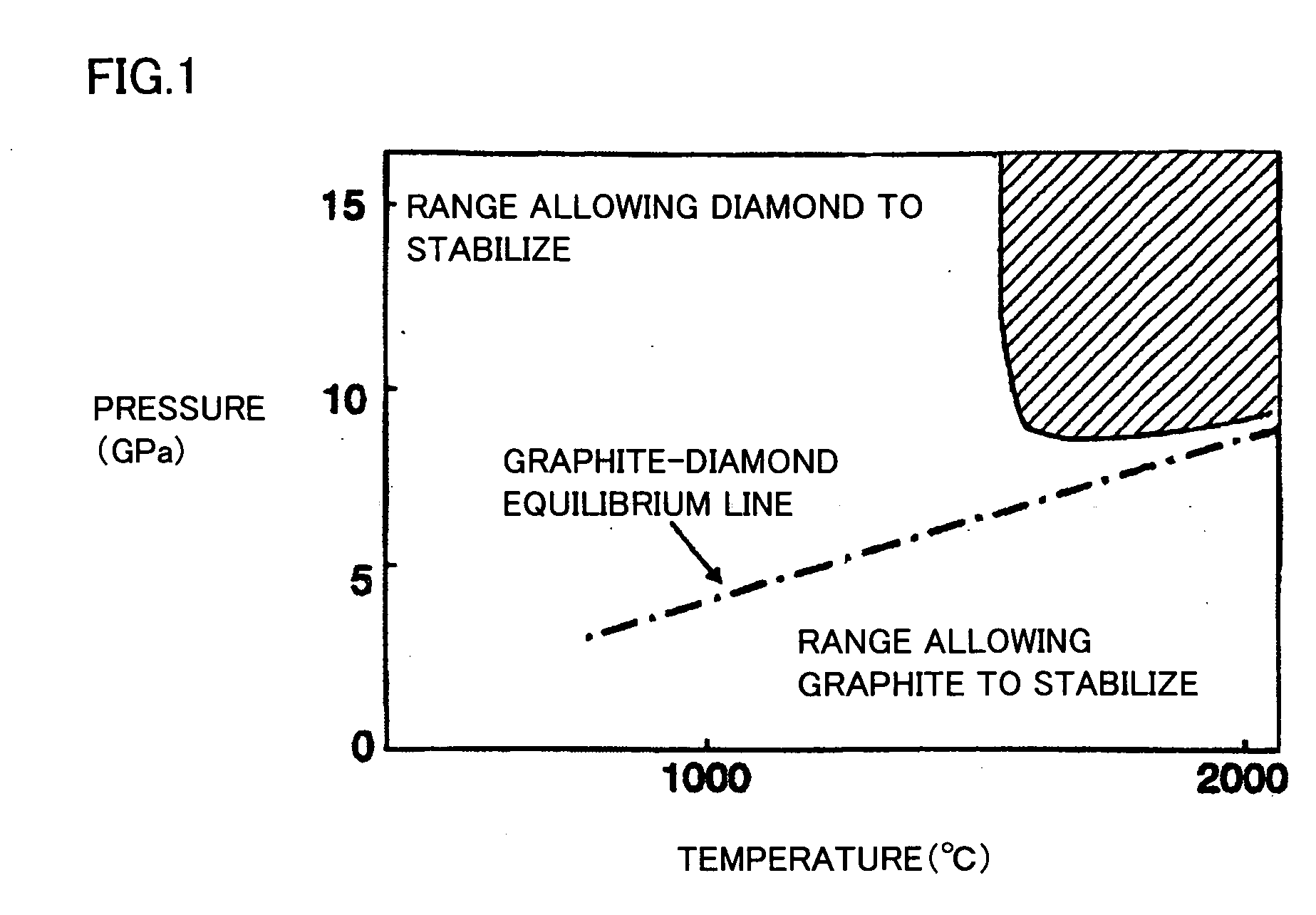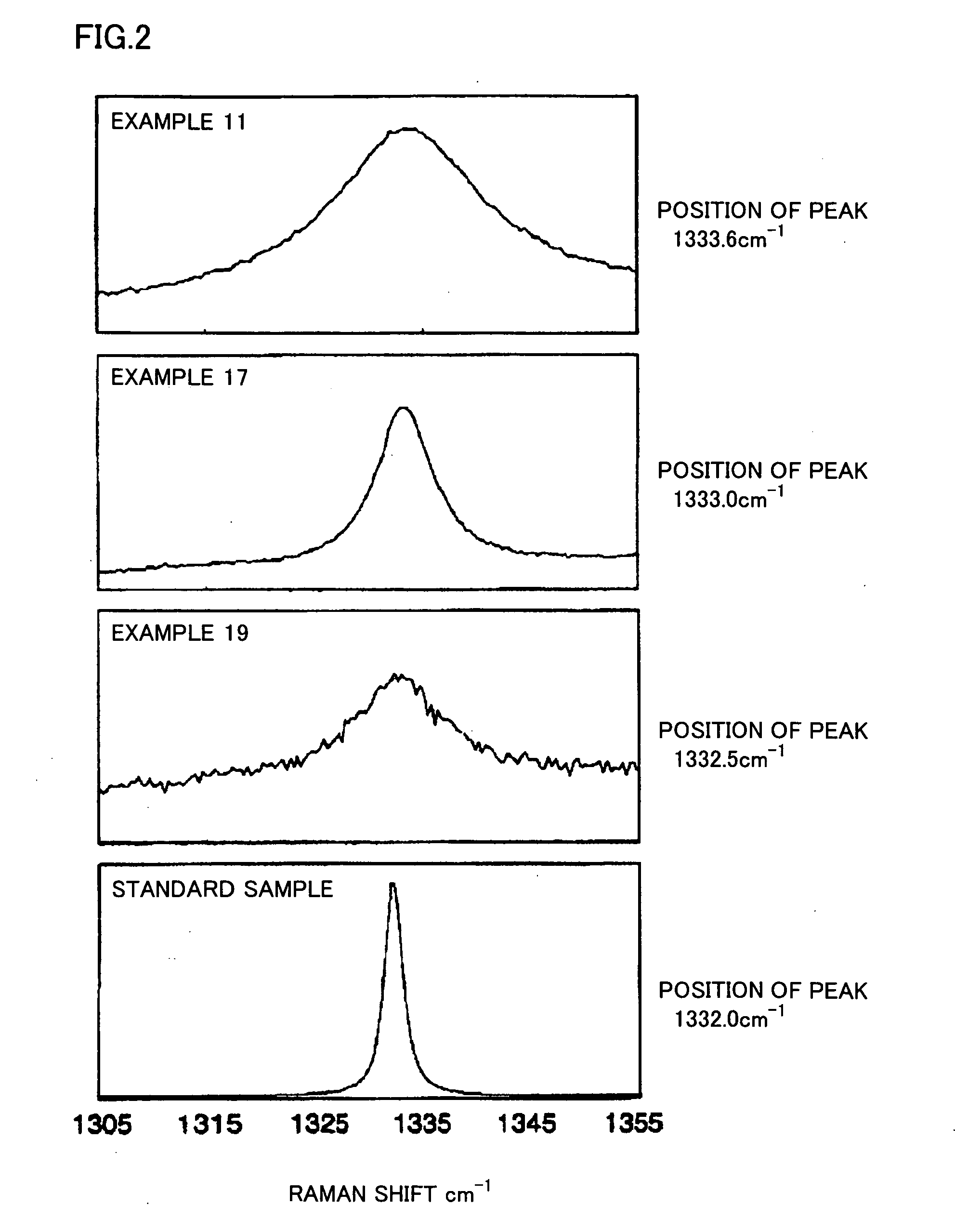High-hardness polycrystalline diamond and method of preparing the same
a polycrystalline diamond, high-hardness technology, applied in the field of polycrystalline diamond and methods of preparing the same, to achieve the effects of excellent mechanical properties and thermal stability, reliable and inexpensiveness, and dense and homogeneous structur
- Summary
- Abstract
- Description
- Claims
- Application Information
AI Technical Summary
Benefits of technology
Problems solved by technology
Method used
Image
Examples
examples 11-19
[0140]A material formed of: graphite powder good in crystallinity having a grain size of 0.05-10 μm and a purity of at least 99.95%; the aforementioned graphite powder which is ultra-finely pulverized to be powder; grassy carbon powder; fullerene powder; and carbon nanotube powder is used. The powders are mixed together and introduced and sealed in an Mo capsule which is in turn processed by a belt-type ultra high pressure generation apparatus at different pressures and different temperatures for 30 minutes to obtain samples.
[0141]The samples had their respective formed phases identified by X-ray diffraction and their respective constituent grains measured in size through TEM observation. Furthermore, the samples had their respective surfaces polished to be mirror finished surfaces, which were in turn measured in hardness with a micro Knoop hardness meter, and on the polished surfaces, Raman spectral measurement was conducted to obtain a position of a first-order Raman spectral line...
PUM
| Property | Measurement | Unit |
|---|---|---|
| Temperature | aaaaa | aaaaa |
| Temperature | aaaaa | aaaaa |
| Fraction | aaaaa | aaaaa |
Abstract
Description
Claims
Application Information
 Login to View More
Login to View More - R&D
- Intellectual Property
- Life Sciences
- Materials
- Tech Scout
- Unparalleled Data Quality
- Higher Quality Content
- 60% Fewer Hallucinations
Browse by: Latest US Patents, China's latest patents, Technical Efficacy Thesaurus, Application Domain, Technology Topic, Popular Technical Reports.
© 2025 PatSnap. All rights reserved.Legal|Privacy policy|Modern Slavery Act Transparency Statement|Sitemap|About US| Contact US: help@patsnap.com


